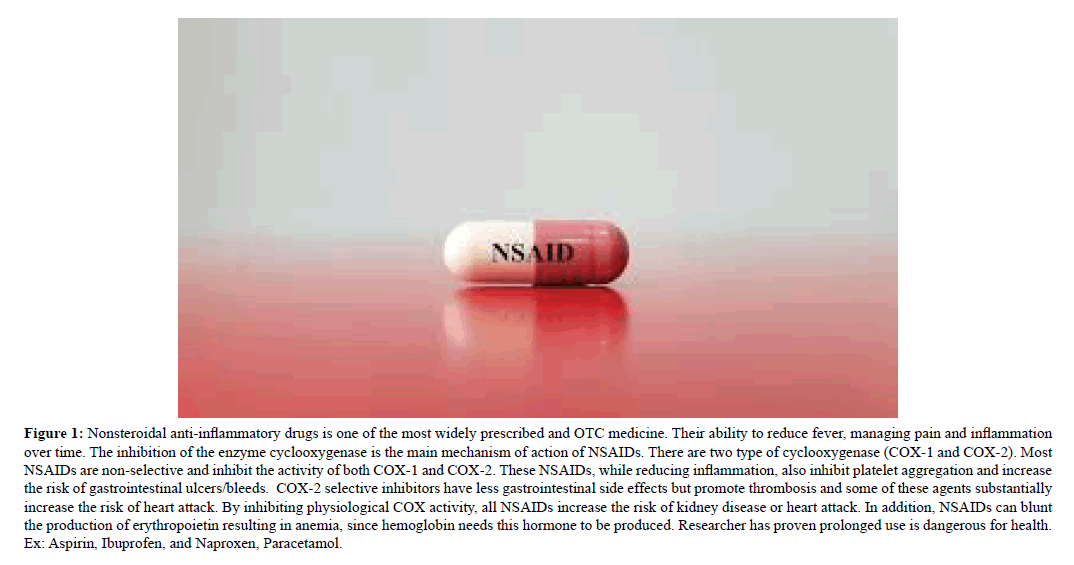ISSN : 2348-1927
Annals of Biological Sciences
Mechanism of action of Anti-inflammatory drugs
Vane JR*
iMedPub, Green Lane, London, UK
Received Date: March 02, 2021, Accepted Date: March 08, 2021, Published Date: March 16, 2021
Figure 1: Nonsteroidal anti-inflammatory drugs is one of the most widely prescribed and OTC medicine. Their ability to reduce fever, managing pain and inflammation over time. The inhibition of the enzyme cyclooxygenase is the main mechanism of action of NSAIDs. There are two type of cyclooxygenase (COX-1 and COX-2). Most NSAIDs are non-selective and inhibit the activity of both COX-1 and COX-2. These NSAIDs, while reducing inflammation, also inhibit platelet aggregation and increase the risk of gastrointestinal ulcers/bleeds. COX-2 selective inhibitors have less gastrointestinal side effects but promote thrombosis and some of these agents substantially increase the risk of heart attack. By inhibiting physiological COX activity, all NSAIDs increase the risk of kidney disease or heart attack. In addition, NSAIDs can blunt the production of erythropoietin resulting in anemia, since hemoglobin needs this hormone to be produced. Researcher has proven prolonged use is dangerous for health. Ex: Aspirin, Ibuprofen, and Naproxen, Paracetamol.
Open Access Journals
- Aquaculture & Veterinary Science
- Chemistry & Chemical Sciences
- Clinical Sciences
- Engineering
- General Science
- Genetics & Molecular Biology
- Health Care & Nursing
- Immunology & Microbiology
- Materials Science
- Mathematics & Physics
- Medical Sciences
- Neurology & Psychiatry
- Oncology & Cancer Science
- Pharmaceutical Sciences

